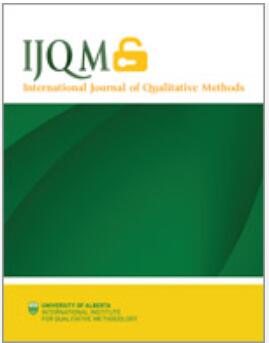Translating Piano Pedagogy Into Biomechanical Language: A Qualitative Framework for Interdisciplinary Knowledge Exchange
IF 3.8
2区 社会学
Q1 SOCIAL SCIENCES, INTERDISCIPLINARY
引用次数: 0
Abstract
Pianists experience high rates of Playing-Related Musculoskeletal Disorders (PRMDs). Biomechanical factors have been investigated by both researchers and music teachers as potentially significant in PRMD development. Knowledge exchange between the fields of music and science about PRMDs may be beneficial, but differences in language use can make interdisciplinary communication challenging. One potential solution is to translate pedagogical ideas into language that is consistent with biomechanical science. Doing so could improve interdisciplinary communication and allow for scientific examination of pedagogical ideas. However, no methods for doing so have been published. To fill this gap, we developed a methodological framework with two stages for translating ideas about piano technique into scientific language: Stage 1 uses Qualitative Content Analysis to summarize pedagogical content; then, Stage 2 includes an “Analysis of Biomechanical Language,” in which researchers translate the ideas described in Stage 1. Both stages are collaborative and rely on expert consultation to produce an appropriate translation. This article outlines the framework and explains how it was used in an initial study on the Taubman Approach. Further methodological guidance to assist researchers in future studies is given based on some of the challenges encountered in the initial study. The framework and guidance here will allow researchers to carry out more studies of this kind. Because the framework is newly developed, it will likely need to be adapted further as more studies are done.将钢琴教学转化为生物力学语言:跨学科知识交流的定性框架
钢琴家的运动相关肌肉骨骼障碍(PRMD)发生率很高。研究人员和音乐教师都调查了生物力学因素对PRMD发展的潜在影响。音乐和科学领域之间关于PRMD的知识交流可能是有益的,但语言使用的差异可能会使跨学科交流具有挑战性。一个潜在的解决方案是将教学思想转化为符合生物力学科学的语言。这样做可以改善跨学科交流,并允许对教学思想进行科学审查。然而,尚未公布这样做的方法。为了填补这一空白,我们开发了一个方法论框架,分两个阶段将钢琴技巧思想翻译成科学语言:第一阶段使用定性内容分析来总结教学内容;然后,第二阶段包括“生物力学语言分析”,研究人员在其中翻译第一阶段中描述的想法。这两个阶段都是合作的,并依靠专家咨询来制作合适的翻译。本文概述了该框架,并解释了它是如何在Taubman方法的初步研究中使用的。根据初步研究中遇到的一些挑战,提供了进一步的方法学指导,以帮助研究人员进行未来的研究。这里的框架和指导将使研究人员能够进行更多的此类研究。由于该框架是新开发的,随着更多研究的进行,可能需要进一步调整。
本文章由计算机程序翻译,如有差异,请以英文原文为准。
求助全文
约1分钟内获得全文
求助全文
来源期刊

International Journal of Qualitative Methods
SOCIAL SCIENCES, INTERDISCIPLINARY-
CiteScore
6.90
自引率
11.10%
发文量
139
审稿时长
12 weeks
期刊介绍:
Journal Highlights
Impact Factor: 5.4 Ranked 5/110 in Social Sciences, Interdisciplinary – SSCI
Indexed In: Clarivate Analytics: Social Science Citation Index, the Directory of Open Access Journals (DOAJ), and Scopus
Launched In: 2002
Publication is subject to payment of an article processing charge (APC)
Submit here
International Journal of Qualitative Methods (IJQM) is a peer-reviewed open access journal which focuses on methodological advances, innovations, and insights in qualitative or mixed methods studies. Please see the Aims and Scope tab for further information.
 求助内容:
求助内容: 应助结果提醒方式:
应助结果提醒方式:


